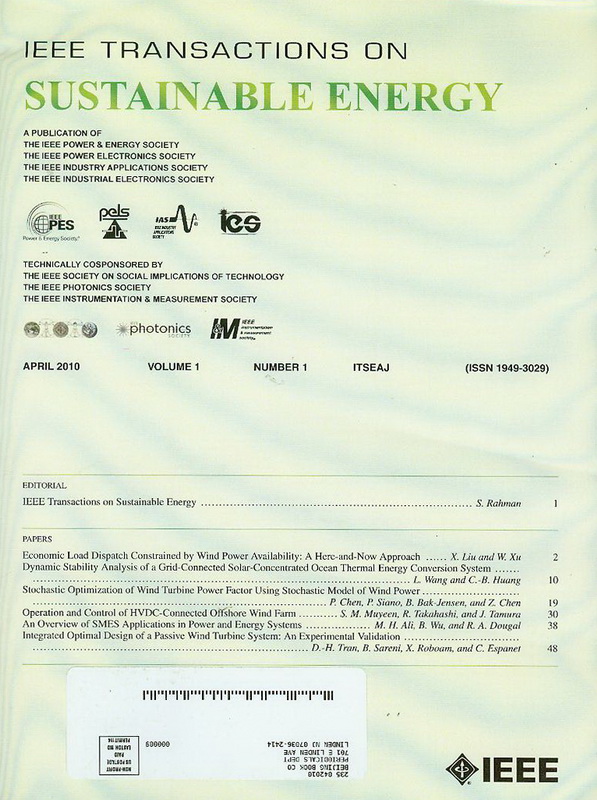Extreme Probabilistic Solar Power Prediction via Localized Sample Structure Recognition and Generalized Error Estimation
IF 10
1区 工程技术
Q1 ENERGY & FUELS
引用次数: 0
Abstract
The fluctuations and uncertainty of solar power constantly threaten the secure operation and economic dispatch of power systems. Existing end-to-end point or probabilistic solar power prediction methods mostly lack effective integration of the two approaches, and the latent error caused by machine learning (ML) techniques is rarely taken into consideration. Hence in this paper, a combined extreme probabilistic solar power prediction (EPSPP) scheme is proposed, by integrating point forecasting with extreme error estimation. Firstly, the localized sample structure recognition (LSSR) is conducted to determine the neighborhood of meteorological conditions, where feature weights of Euclidean distance measurement are allocated with respect to the valid mutual information (MI) derived by two-dimensional diffusion kernel density estimation (2D-DKDE). Secondly, with the neighborhood generated by LSSR, an improved localized generalization error estimation (ILGEE) algorithm is put forward to infer the real-time maximal second-order origin moment of solar power point forecasting error corresponding to designated confidence levels. Finally, the solar power at each temporal moment is deduced as distinct Gaussian distributions, by modifying the mean value and variance according to statistical principles. For the sake of the so-called “extreme”, the proposed scheme could maintain reliability even under circumstances of the worst ML model precision. Cases from a real-world solar power station in Oregon, USA, are used to validate its effectiveness.基于局部样本结构识别和广义误差估计的太阳能发电极值概率预测
太阳能发电的波动和不确定性不断威胁着电力系统的安全运行和经济调度。现有的端到端点或概率太阳能预测方法大多缺乏两种方法的有效集成,并且很少考虑机器学习(ML)技术引起的潜在误差。为此,本文提出了一种将点预测与极值误差估计相结合的组合极值概率太阳能发电预测方案。首先,根据二维扩散核密度估计(2D-DKDE)得到的有效互信息(MI)分配欧氏距离测量的特征权值,进行局部样本结构识别(LSSR),确定气象条件的邻域;其次,利用LSSR生成的邻域,提出了一种改进的局部泛化误差估计(ILGEE)算法,实时推断出指定置信水平对应的太阳能发电点预测误差的最大二阶原点矩;最后,根据统计原理,通过对均值和方差的修正,推导出各时刻的太阳能功率为不同的高斯分布。为了达到所谓的“极致”,所提出的方案即使在ML模型精度最差的情况下也能保持可靠性。以美国俄勒冈州的一个真实太阳能电站为例,验证了其有效性。
本文章由计算机程序翻译,如有差异,请以英文原文为准。
求助全文
约1分钟内获得全文
求助全文
来源期刊

IEEE Transactions on Sustainable Energy
ENERGY & FUELS-ENGINEERING, ELECTRICAL & ELECTRONIC
CiteScore
21.40
自引率
5.70%
发文量
215
审稿时长
5 months
期刊介绍:
The IEEE Transactions on Sustainable Energy serves as a pivotal platform for sharing groundbreaking research findings on sustainable energy systems, with a focus on their seamless integration into power transmission and/or distribution grids. The journal showcases original research spanning the design, implementation, grid-integration, and control of sustainable energy technologies and systems. Additionally, the Transactions warmly welcomes manuscripts addressing the design, implementation, and evaluation of power systems influenced by sustainable energy systems and devices.
 求助内容:
求助内容: 应助结果提醒方式:
应助结果提醒方式:


